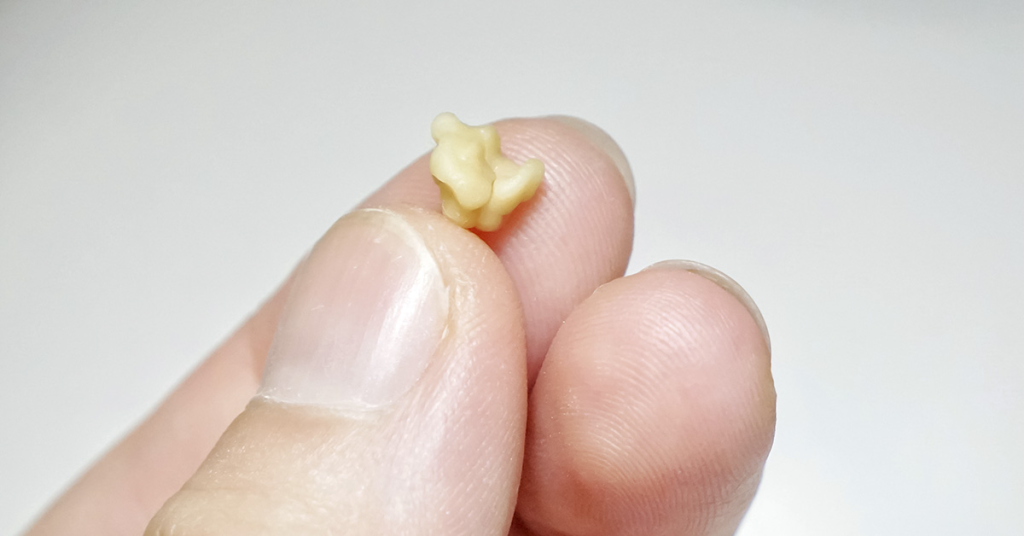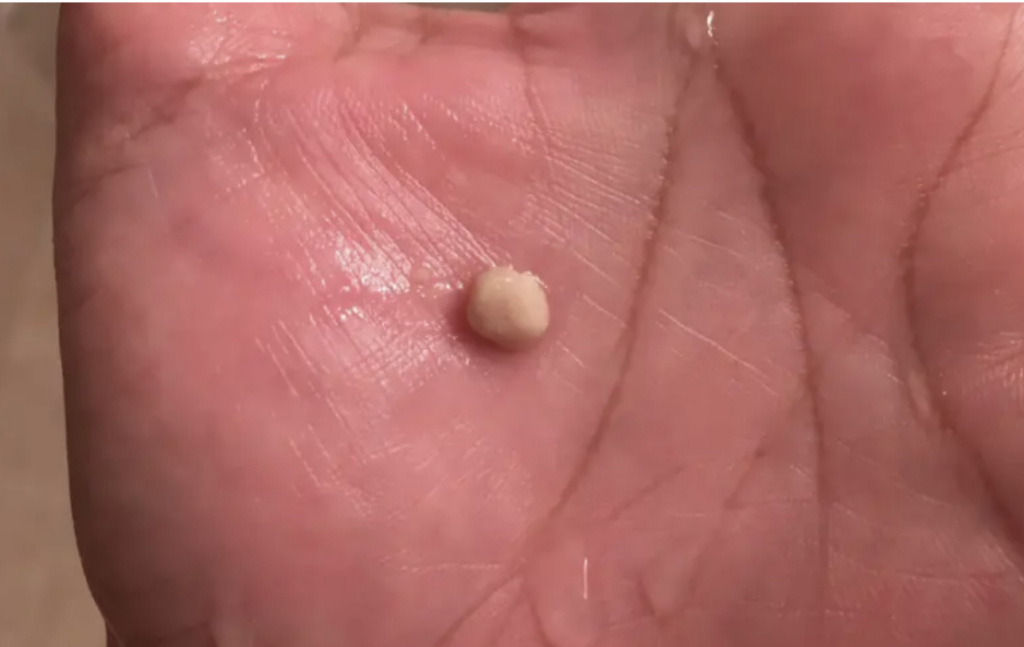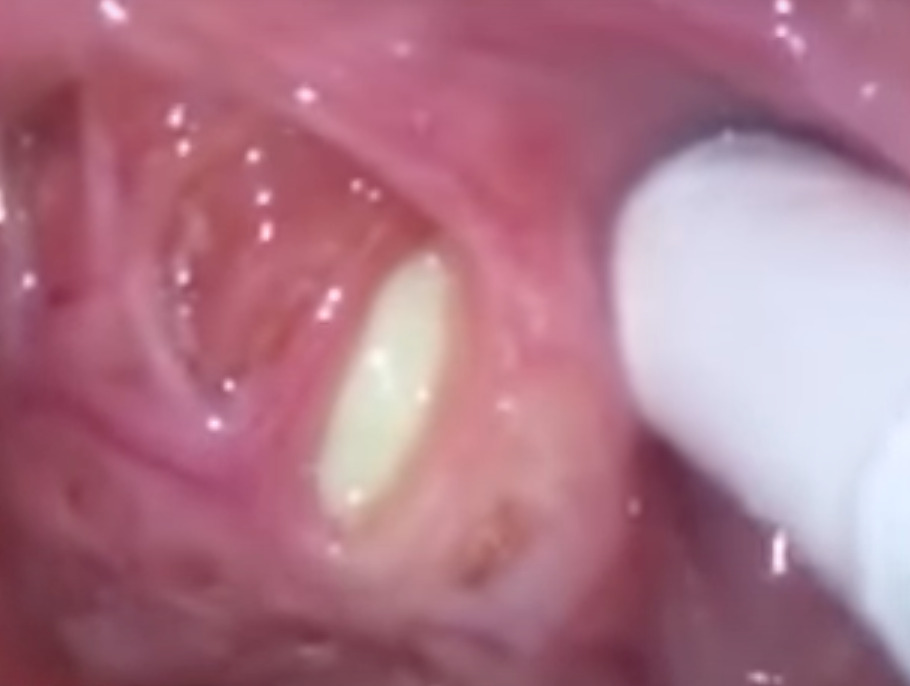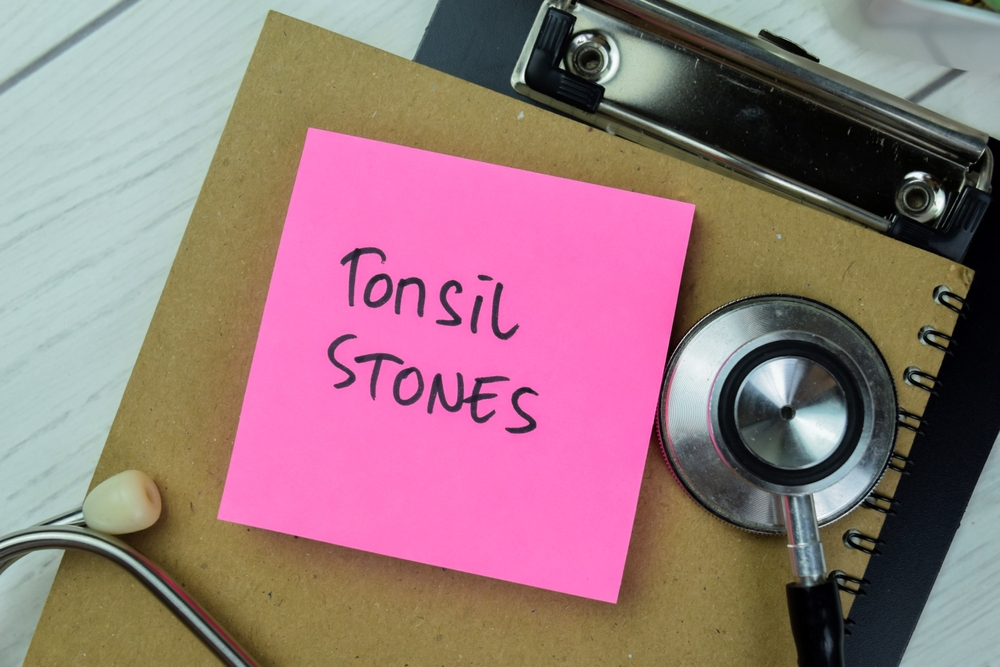Have you ever coughed up a small, foul-smelling lump and wondered, “What on earth was that?” Chances are, you encountered a tonsil stone. Also known as tonsilloliths, these little white or yellow formations can be surprisingly annoying, even if they aren’t typically dangerous.
Tonsil stones might be tiny, but they can pack a punch—especially when it comes to bad breath. Let’s dive into what they are, what causes them, and most importantly, how to get rid of them and keep them from coming back.

Understanding Tonsil Stones: The Basics
Tonsil stones form when debris—like food particles, dead cells, and bacteria—gets trapped in the crevices of your tonsils. Over time, this debris hardens or calcifies into small, pebble-like growths.
They often hide in the tonsil crypts (those small pockets in your tonsils), which makes them tricky to spot. While they’re most common in kids and young adults, people of all ages can get them. And yes, even if you’re super clean, they can still form.
Video: Tonsil Stones | Tonsil Stones Treatment | Tonsil Stone Removal – All You Need to Know
What Do Tonsil Stones Look and Feel Like?
Tonsil stones are usually small and pale, looking a bit like tiny white pimples. They’re often soft at first and then harden. Some are barely noticeable. Others? Not so much.
Here are common symptoms that might signal a tonsil stone:
- Persistent bad breath (no matter how much you brush)
- A sore throat or a tickling sensation
- A metallic taste in your mouth
- Swollen tonsils or redness
- Trouble swallowing
- Pain or pressure in the ears
- An occasional cough you can’t explain
You might not feel anything if they’re small—but when they grow or multiply, they make their presence known.
How Are Tonsil Stones Diagnosed?

Think you’ve got one? A doctor can usually spot tonsil stones with a quick look in your mouth. Sometimes, they might order imaging like X-rays or a CT scan if the stones are deeper or causing more serious issues.
Still, most diagnoses happen right in the exam chair—no fancy equipment required.
Treatment Options: From DIY to Medical Help

So, you’ve found out you’ve got tonsil stones. Now what? Good news: most of them don’t require anything dramatic. Here’s how to deal with them:
1. Self-Removal
If the stone is visible and near the surface, you can try removing it gently with:
- A cotton swab
- A soft toothbrush
- Saltwater gargles
Important tip: Never poke at your tonsils with anything sharp. You don’t want to damage the tissue or cause bleeding.
2. Medicated Gargles
Antibacterial or antiseptic mouthwashes can help break down bacteria and reduce buildup. Look for ones designed to fight halitosis (bad breath) or plaque.
3. Oral Irrigators
Water flossers or oral irrigators can flush debris out of the tonsil crypts. Just make sure to use gentle pressure—you’re not power-washing your tonsils.
4. Tonsillectomy (Surgery)
In extreme or chronic cases—like frequent tonsil infections or stones causing major discomfort—doctors might suggest removing your tonsils altogether. This is usually a last resort but can be life-changing for some.
Home Remedies That Can Help
Video: Tonsils and Adenoids Surgery
Want to go the natural route first? These simple remedies can offer relief:
- Saltwater Gargles: Dissolve 1 tsp of salt in a warm glass of water and gargle. It reduces inflammation and may help loosen stones.
- Apple Cider Vinegar: Dilute with water and gargle to fight bacteria and help break down stones.
- Essential Oils: Gargling with diluted essential oils like tea tree or peppermint oil may help fight bacteria.
- Stay Hydrated: Water helps flush food and bacteria from your mouth—less debris means fewer stones.
- Oral Probiotics: These supplements support healthy bacteria levels in your mouth and may reduce stone formation.
Why Do Tonsil Stones Happen in the First Place?
It comes down to a few key culprits:
- Poor oral hygiene: Bacteria thrives when teeth and tongues aren’t cleaned thoroughly.
- Chronic tonsillitis: Inflamed tonsils trap debris more easily.
- Large tonsil crypts: Some people just naturally have deeper pockets in their tonsils.
- Dry mouth: Saliva helps flush away food particles and bacteria. Less saliva = more build-up.
How to Prevent Tonsil Stones From Coming Back

Tired of tonsil stones making surprise appearances? Here are some daily habits that can help keep them at bay:
- Brush and floss regularly: Especially your tongue—tons of bacteria hang out there.
- Use mouthwash: Go for an alcohol-free version that kills bacteria without drying out your mouth.
- Drink water all day: Hydration helps keep your mouth clean.
- Quit smoking: Tobacco dries out and irritates your mouth, encouraging stone formation.
- Treat allergies: Post-nasal drip can contribute to tonsil stone build-up. Managing your allergies can help reduce risk.
Should You Be Worried?
Tonsil stones can be uncomfortable and kind of gross—but they’re usually harmless. However, if you’re constantly dealing with them, or if they’re causing infections or affecting your daily life, it’s worth speaking with an ENT (ear, nose, and throat) specialist.
They can give you a game plan that’s tailored to your specific anatomy and health history.
Conclusion: No Need to Panic, But Pay Attention
Tonsil stones might be small, but they can be a big nuisance. Thankfully, once you know what they are and how to deal with them, they’re pretty manageable. Whether you take a DIY approach or get help from a pro, the key is consistency and good oral hygiene.
So next time your throat feels weird or your breath just won’t stay fresh, don’t ignore it—it might be a tiny little stone trying to make itself known


